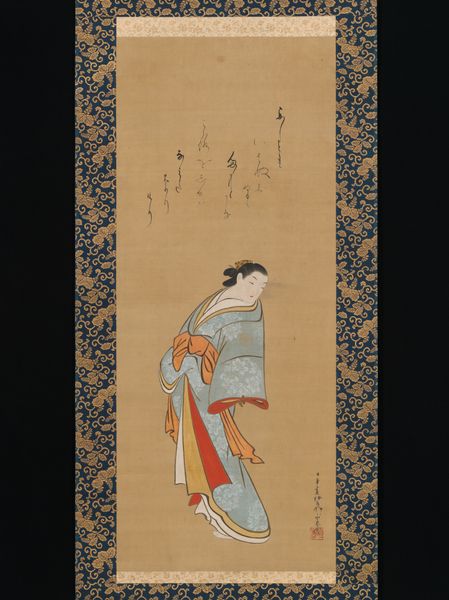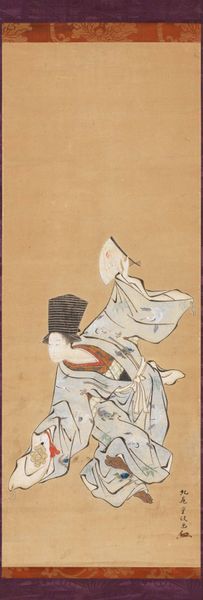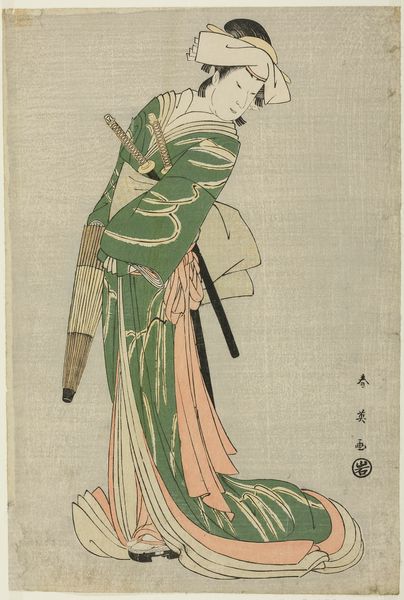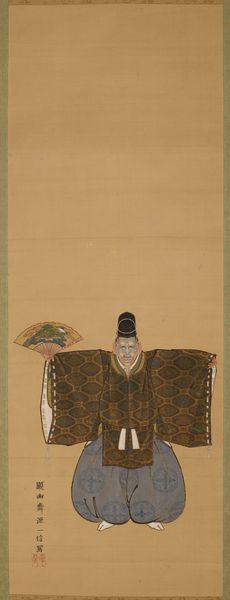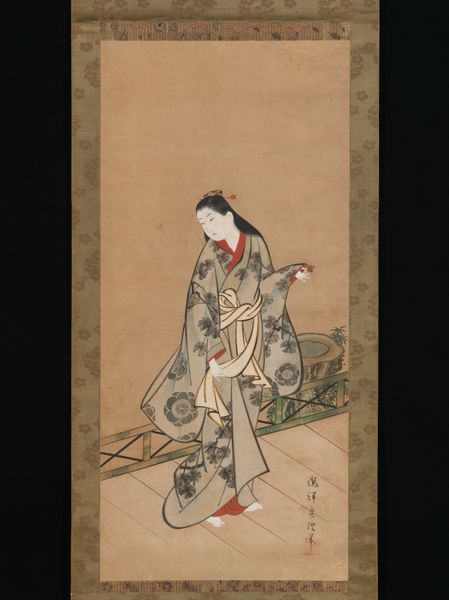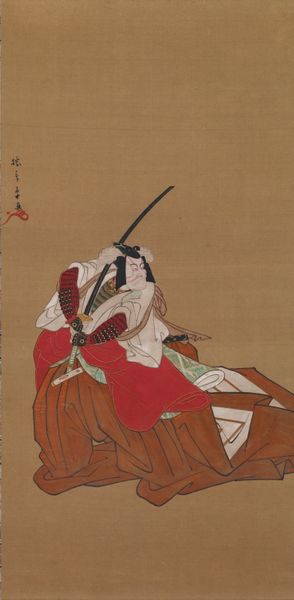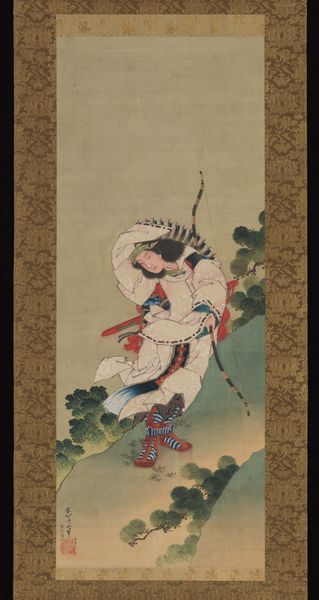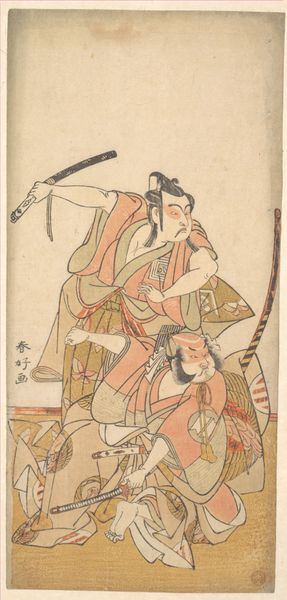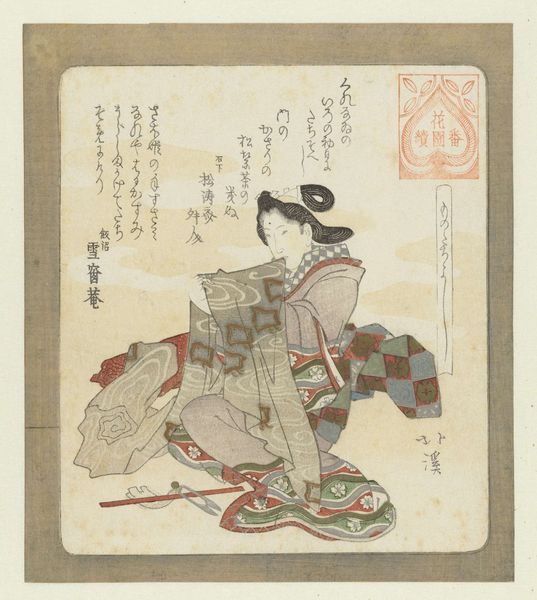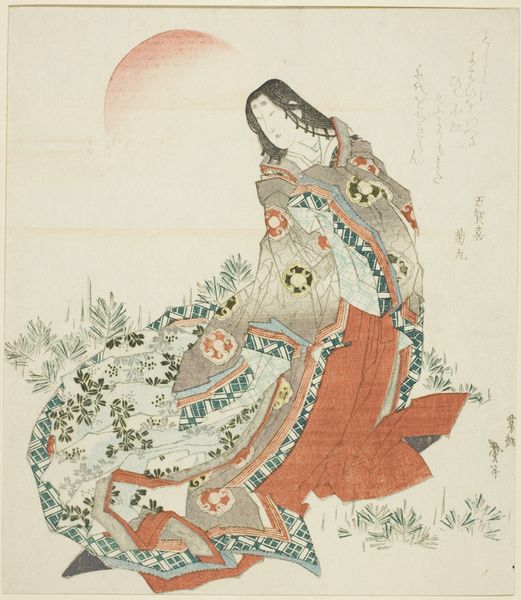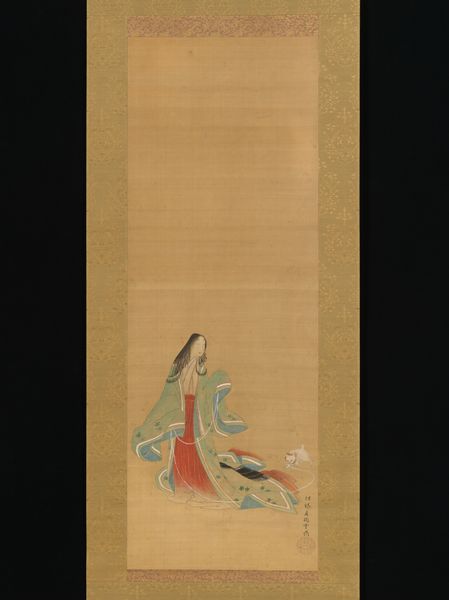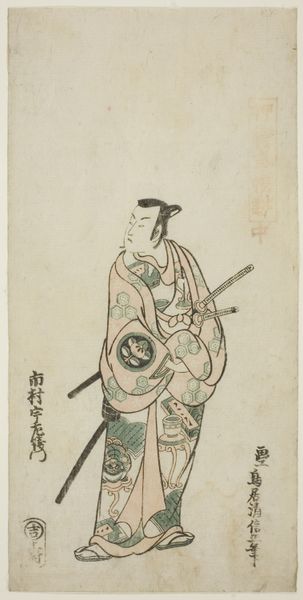
Sanbaso [left of a triptych of the Noh roles Senzai c. mid 19th century
0:00
0:00
color-on-silk, watercolor, ink
#
portrait
#
water colours
#
ink painting
#
color-on-silk
#
asian-art
#
ukiyo-e
#
figuration
#
watercolor
#
ink
#
watercolor
Dimensions: 32 1/2 × 11 3/4 in. (82.55 × 29.85 cm) (image)68 1/4 × 16 5/8 in. (173.36 × 42.23 cm) (mount, without roller)
Copyright: Public Domain
Editor: This color-on-silk artwork, "Sanbaso [left of a triptych of the Noh roles Senzai," was created around the mid-19th century by Kano Kazunobu. The figure almost seems to be floating in space. It has such a captivating sense of ritual. What aspects of the cultural context might be influencing its portrayal? Curator: I'm struck by your observation of ritual. Let’s consider this figure, likely representing a Sanbaso dancer, within the Edo period's rigid social structures and artistic conventions. The Kano school, to which Kazunobu belonged, served the Shogunate. Its paintings, including portraits such as this one, reflected power. Noh theater, with its highly stylized movements and symbolism, operated under similar restrictions of class and codified messaging. This performance likely reflected the values that upper classes espoused. Editor: So, how does an image like this reinforce, or maybe even subvert, some of those social hierarchies? Curator: Exactly the right question to ask! While the Kano school upheld traditional techniques, the ukiyo-e influences also brought in elements of popular culture. This, coupled with the rise of a merchant class, could have presented a unique tension within these portraits. Consider how the artist balances the aristocratic subject of Noh with stylistic features accessible to a wider audience. What do you think is gained, and lost, in that translation? Editor: I guess it's fascinating to think about how it’s both perpetuating tradition and maybe making it more widely palatable? That makes me see the art in a new way. Thanks! Curator: Absolutely. Viewing art as a complex negotiation of social and cultural forces always offers a richer understanding.
Comments
No comments
Be the first to comment and join the conversation on the ultimate creative platform.
